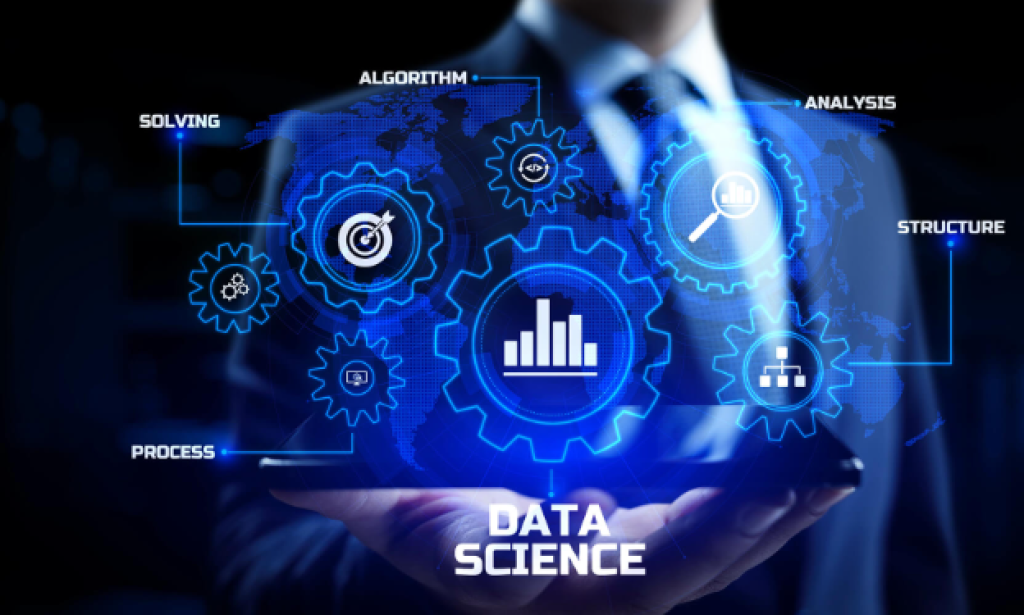CORE CONCEPTS OF DATA SCIENCE AND ARTIFICIAL INTELLIGENCE
Data Science and Artificial Intelligence (AI) have become fundamental to modern technology, impacting everything from business decision-making to personalized recommendations. At their core, these fields focus on extracting valuable insights from data and enabling machines to perform tasks that typically require human intelligence. Data science involves a set of techniques, tools, and practices to analyze and interpret complex data, while AI takes it further by creating systems capable of learning and adapting. To understand these fields, it’s essential to explore their foundational concepts, which include machine learning, data preprocessing, and model evaluation.
1. Machine Learning and Its Types
Machine learning (ML) is central to both data science and AI. ML involves training algorithms to recognize patterns in data, allowing them to make predictions or decisions without explicit programming. There are three main types of machine learning:
(i)Supervised Learning
In supervised learning, the model is trained on labeled data, which includes both input and output values. Common applications include image classification, fraud detection, and predictive analytics.
(ii)Unsupervised Learning
Unsupervised learning is used when data is unlabeled, meaning there are no predefined outputs. This approach helps in tasks like clustering and dimensionality reduction, often applied in customer segmentation or anomaly detection.
(iii) Reinforcement Learning
Reinforcement learning is a feedback-based approach where an agent learns by interacting with its environment and receiving rewards or penalties. It’s widely used in game playing, robotics, and autonomous vehicles.
2. Data Preprocessing and Feature Engineering
Data preprocessing is a crucial first step in any data science project. Raw data is often messy, containing inconsistencies, missing values, or outliers. Preprocessing techniques, such as data cleaning, transformation, and normalization, help prepare the data for analysis. Feature engineering follows, focusing on selecting, modifying, and creating variables (features) to improve model performance. Good feature engineering can significantly enhance a model’s predictive power by highlighting the most relevant information in the dataset.
3. Model Selection and Evaluation
Model selection involves choosing an algorithm that best fits the data and the problem. Common algorithms include linear regression, decision trees, support vector machines, and neural networks. After selecting a model, it’s essential to evaluate its performance using metrics like accuracy, precision, recall, and F1-score, depending on the task. Cross-validation is also commonly used, dividing data into training and testing sets to ensure the model generalizes well to new data.
4. Deep Learning and Neural Networks
Deep learning, a subset of machine learning, leverages neural networks to analyze large datasets with complex patterns. Inspired by the human brain, neural networks consist of layers of interconnected nodes that process and transform data. Deep learning is especially effective for image recognition, speech processing, and natural language understanding, as it excels at handling unstructured data.
5. Natural Language Processing (NLP)
Natural Language Processing enables machines to understand and respond to human language, making it a key area in AI. NLP techniques include tokenization, sentiment analysis, and machine translation. By breaking down and analyzing human language, NLP powers applications like chatbots, language translation tools, and sentiment analysis systems.
6. Data Visualization and Interpretation
Data visualization is the process of representing data in graphical formats like charts, graphs, and dashboards, helping to identify trends, patterns, and outliers. Effective data visualization aids in interpreting results, allowing data scientists and decision-makers to derive actionable insights. Tools like Tableau, Power BI, and Python libraries such as Matplotlib and Seaborn make it easier to create informative visualizations.
7. Ethical Considerations and Bias
With the growing influence of data science and AI, ethical considerations are paramount. Data scientists must ensure data privacy, avoid biases, and develop transparent algorithms that produce fair outcomes. Addressing issues such as model explainability and algorithmic bias is essential to building trust in AI systems and preventing unintended consequences.
Data science and AI continue to advance, with each core concept contributing to a framework that empowers data-driven decision-making and intelligent automation. As we deepen our understanding of these foundations, the potential for data science and AI to solve complex problems and create positive societal impact only grows. These core concepts serve as the building blocks of a transformative field that is shaping the future.


You must be logged in to post a comment.